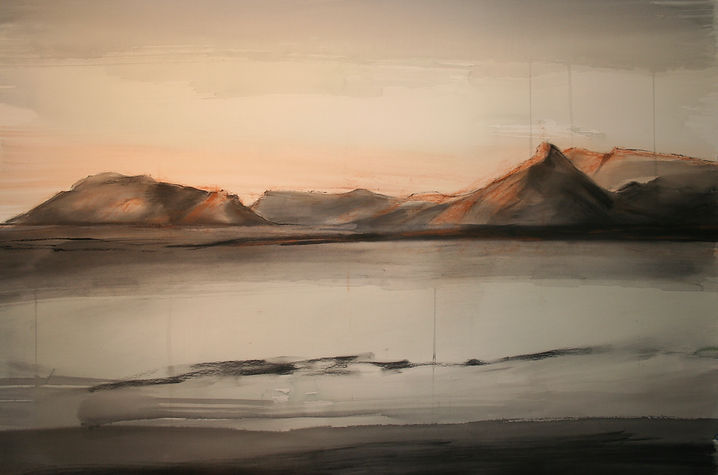Work
There is an intense humanism that informs, and has always been present in Soggot’s work: a deep interest in the human form and the potential for emotion and connection that it contains.

Deux Têtes IV, 2007
"Soggot's formal grammar is a sparse, terse language deliberately circumscribed by minimal means. She uses a monochromatic palette to indicate the body - only the ochres and reds of the Magaliesberg earth framed by the black pigment of the ground or the white of the paper. That is all. Just the body and space...
She prefers to work with visual means alone, leaving the act of translation to her viewers. Working in the language of mark on paper she stands outside the more fashionable art engagé.
Soggot strips her bodies of narrative support. As Gormley would put it, "The existential silence created by the refusal to provide narration is contradictorily weighted with an emotive force - one that remains tantalizingly out of reach of normal discourse." Thea extends this reductive approach. Her bodies are often shown as partial forms - only a headless back, or a torso on the white void of the paper , or a head poised on a neck whose arch is achingly beautiful. It is this very hint of muscular contraction that an empathetic link is created between the image and the viewer. One knows, but just what one knows, remains out of reach. It is as if language has been bypassed and body speaks to body.’’ - from Earth and Ink by Wilma Cruise

Veiled V, 2015

Veiled I, 2015
There are periods when Soggot explores outside her oeuvre of the body, which she's best known for. Here are two drawing of a place she has returned to over the last 26 years - a place that has been and continues to be of significance to her.

The Place I Love I, 2012
